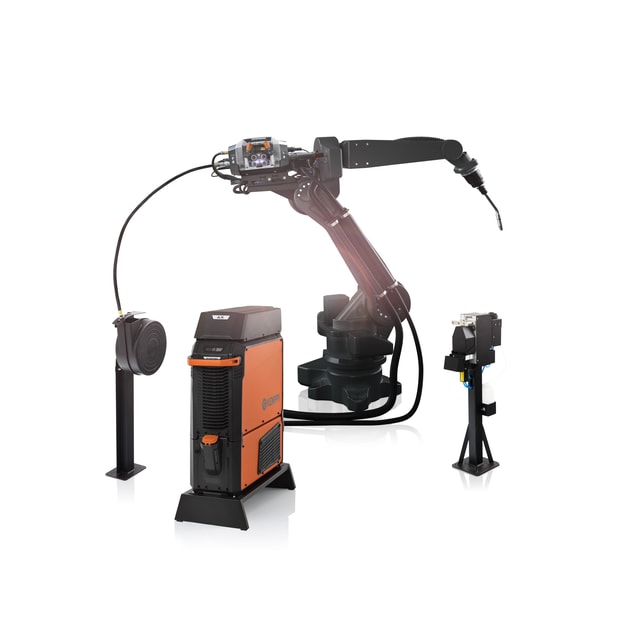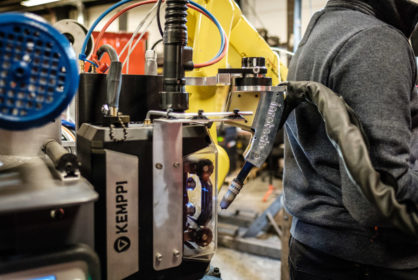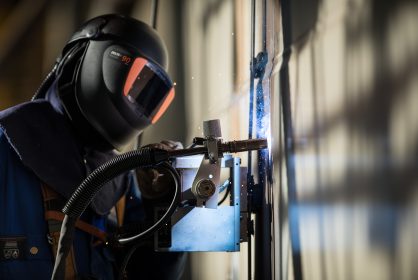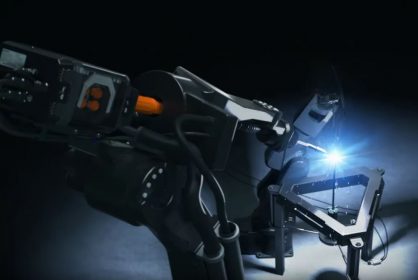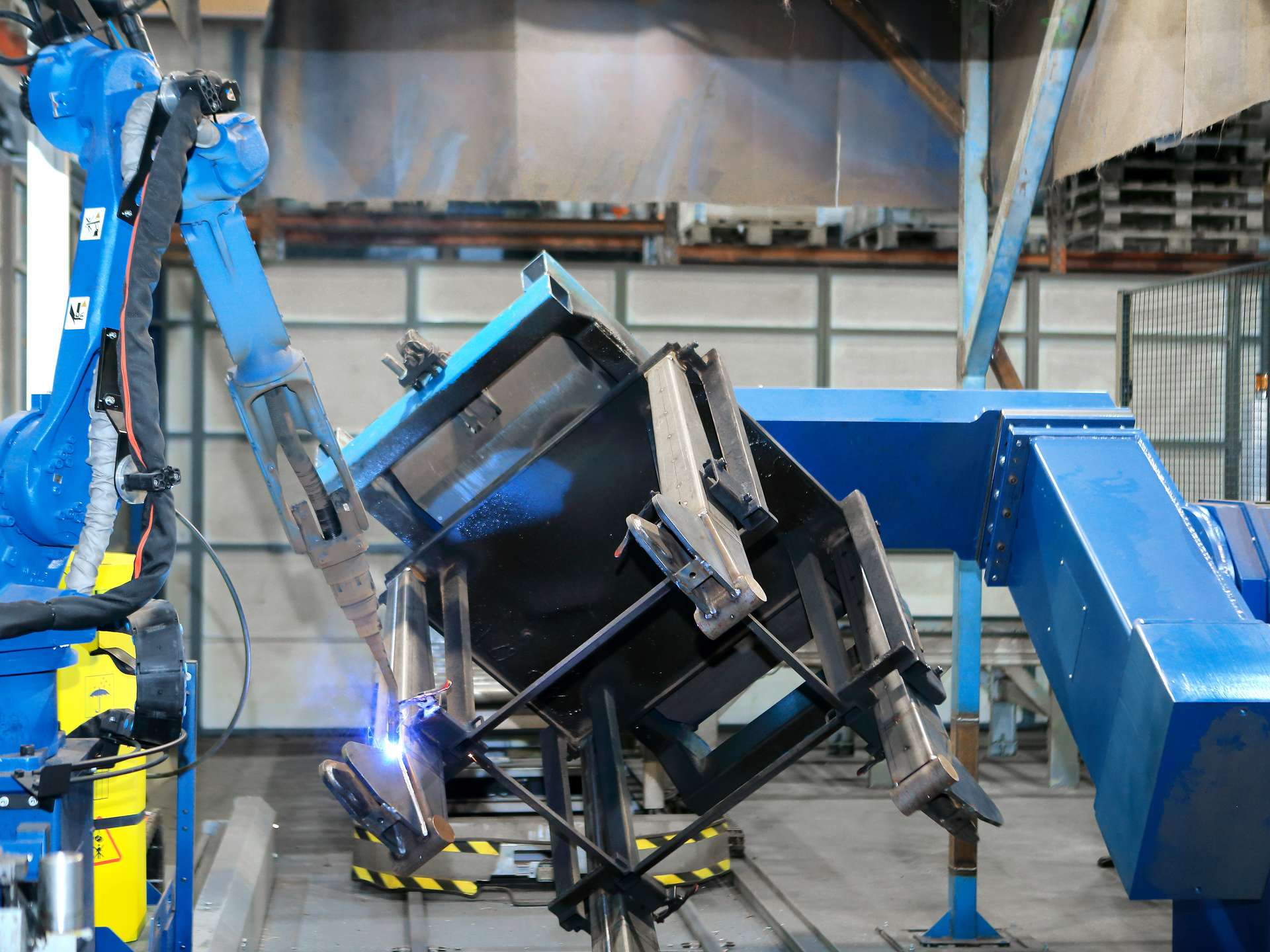
Automatización de la soldadura
Robotic welding of a workpiece requires seamless collaboration
15 de junio de 2020
A productive, high-quality robotic welding cell is created in collaboration between a robot integrator, a welding machine supplier, and a workpiece designer. The best solution for customizing a robotic welding cell is found when reliable welding equipment with different detection functions meets automation expertise early on in the design phase.
Artturi Salmela
A cost-effective robot investment starts with the choice of a workpiece and 3D modeling of a robot cell. 3D modeling requires expertise in robotics, welding, and workpiece design, as well as smooth interaction between the cooperators. The size of the workpiece is a particularly critical factor in finding the best solution for welding robotization.
For 3D modeling, you need to select:
a workpiece,
a robot,
a suitable turntable,
other equipment needed for moving the piece, and
the necessary welds.
Simulation helps in determining possible collision points. Is the range of the robotic solution sufficient, can optimal welding angles be reached, and will the theoretical tolerance be sufficient in reality as well? If the modeling phase reveals some problems, you may need to modify or redesign the workpiece. The model of the robot or its equipment can also be changed to find the best result.
Detecting actual tolerances is an essential factor in the weldability of a workpiece. During the design phase, you must consider the reach of the equipment and its ability to move and react to the shape and size of the seam. You may also consider the robot’s reprogramming, the need for laser search, or other detection functions.
Precise detection functions make welding easier
In welding automation, we often encounter challenges related to the weldability of a workpiece, which a welding machine supplier may have a solution to. The power sources of Kemppi’s A7 MIG Welder system have four different detection functions that improve weld quality. Some of the functions can also detect the location of the seam. The detection systems in welding power sources are often more accurate than those of robots.
function automatically optimizes the ignition distance.
Touch Sense
function detects contact of the filler wire and the workpiece, allowing the robot to determine the starting point of the weld.
Through-Arc Seam Tracking (TAST)
seam tracking feature signals the filler wire stick-out length to the robot, which allows the robot to track the seam.
Reduced Gap Technology (RGT)
is a technology that continuously adjusts the arc length in narrow gap welding. The arc power remains constant regardless of changes in the nozzle distance as the values of the welding machine are optimized according to the varying filler wire stick-out length. In some cases, this function can replace the use of the TAST signal.
The functions on the power source require space to identify and view the shapes of a workpiece. When the welding equipment supplier is involved in the early stages of the design phase, it is possible to solve some of the problems with the power source’s own functions.
Welding laboratory and partners help out in finding solutions
In conclusion, a powerful robotic welding cell is the sum of many factors. A competent robot supplier ensures that the robot moves efficiently. Kemppi, for its part, masters high-quality welding with the right parameters.
We work with leading robot suppliers to best solve the challenges that customers may have in robotic welding. Both simulation and robotic welding can be demonstrated at Kemppi’s welding laboratory in Lahti, Finland. ABB Finland – among others – simulates, programs, and delivers robotic solutions and provides training in our welding lab. We cooperate with Yaskawa, KUKA, and Kawasaki in a similar way.
On an international scale, we offer robotic welding solutions and services for integrators and end-users at Kemppi’s robotic welding application centers in India and China. Our local welding advisors e.g. optimize customers’ welding applications and organize different types of training.
Welding usually accounts for only 10% of the investment. But if the seam does not meet the quality requirements, the significance of welding suddenly becomes 100%. Therefore, when planning robotization, it is wise to include the expertise of the welding equipment supplier and the possibilities offered by the power source right from the start. With Kemppi, you will find the right welding solutions and reliable partners for welding robotization.
Discover Kemppi’s robotic welding range for MIG/MAG welding automation

Artturi Salmela
Artturi Salmela
Product Manager, Automation at Kemppi Oy. A robotics expert with 20 years of experience in e.g. computer vision, user interfaces, offline programming, and robotic welding. Interested in the development of welding automation and its connectivity to digital systems.
